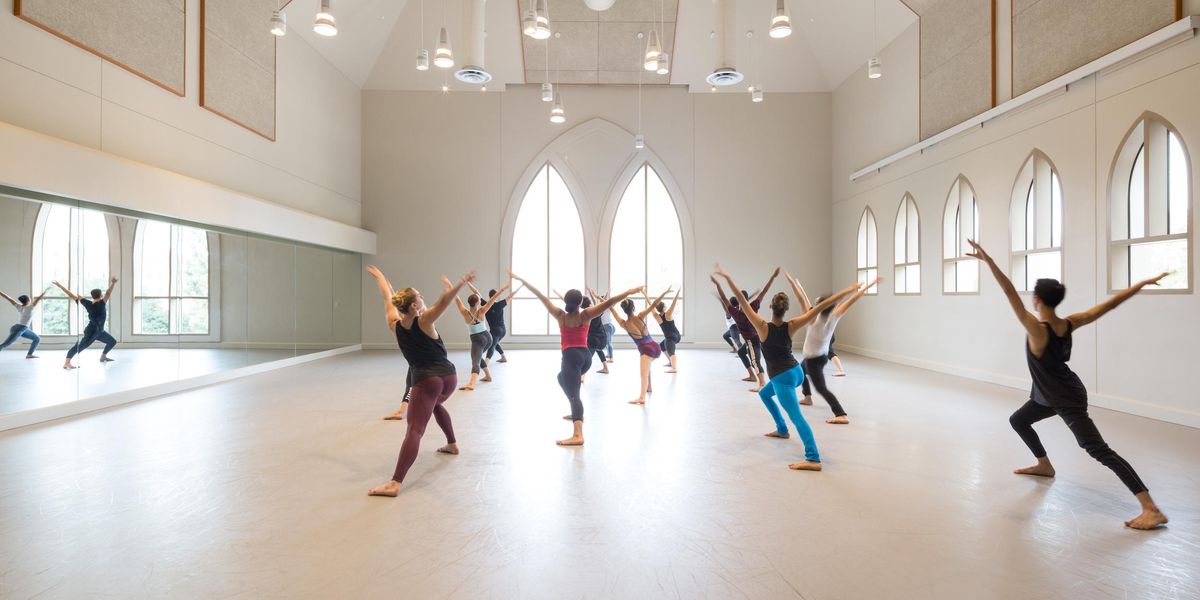On Broadway: Magic to Do
Pippin’s revival salutes Fosse’s smooth moves.
Patina Miller leading Fosse’s “Manson Trio.” Photo: Michael J. Lutch, Courtesy ART.
Co-creator of the Tony-winning 1999 tribute Fosse, and of the Jack Cole revue Heat Wave, Walker also performed in the original Pippin, in which a young prince searches for the meaning of life in the age of Charlemagne. “The story is the same,” he says. But the concept, with its circus theme, is different. “To take Mr. Fosse’s work and put it in a new concept is, I think, disrespectful.” So the show’s choreography, as credited in the program, is “by Chet Walker in the style of Bob Fosse.”
It’s a style Walker knows something about. Four of the seven Broadway shows he danced in were Fosse classics. From the moment he began taking classes, as a 5-year-old in Memphis, everyone—especially his mother—assumed ballet would be his thing. But at 16 he ended up in the ensemble of the 1971 revival of On the Town. His second show, the 1973 revival of The Pajama Game, informed his approach to Pippin. Fosse, Walker says, declined to tinker with his original dances.
“Mr. Fosse always wanted to do not what’s old, but what’s current,” Walker explains. “So in looking at Pippin, I wanted to keep the heritage, but also to move forward.”
That heritage would be daunting for anyone else. Pippin was at the time the ultimate statement of Fosse style: smooth yet highly articulated, sexy and ironic at the same time. And under the suave command of the great Ben Vereen as the Leading Player, it moved through Stephen Schwartz’s score with what New York Times reviewer Clive Barnes called “complete continuity between [Fosse’s] staging and his choreography.”
Walker says being in Pippin changed his life. “We were asked to be actors when we danced. You weren’t just put in a costume and therefore you were that person.” Until Pippin, Walker had seen himself as strictly a dancer; more specifically, a dyslexic dancer who didn’t expect he would ever be entrusted with songs or lines. “If it wasn’t for Mr. Fosse,” he says, “I would never have gotten over a lot of that.”
Fosse’s emphasis on acting affected the current production, too. Apart from Charlotte d’Amboise, who plays Pippin’s slinky stepmother Fastrada, the show’s leads were not cast for their dance chops. And, says Walker, if you had asked Patina Miller at the start of rehearsals if she was comfortable taking on a role originated by the lithe and well-trained Vereen, she’d probably have answered no.
“Patina didn’t know how much of a dancer she really was,” he continues. “The thing about doing the work that I do, which is based in how Mr. Fosse worked, is that it is the character who moves. It’s not dance for dance’s sake. It’s driven by acting. So as we designed a Leading Player for her, and created movement for her storytelling, she would tell you, ‘I guess I can’t say I’m not a dancer anymore.’ And she would be correct.”
Miller does perform some of the Leading Player choreography that Fosse created on Vereen: the famous “Manson Trio,” named for the notorious cult leader. Originally danced by Vereen and two women while gruesome battle scenes were mimed behind them, it was a classic Fosse riff on the soft-shoe, complete with hats and canes. What made it famous was that Fosse used it in the first-ever television commercial for a Broadway musical. As it began, with the dancers cocking their hips to the tinkly, irresistible tune, the friendly voiceover said, “Here’s a free minute from Pippin…” And as the mesmerizing number came to a close, you heard, “You can see the other 119 minutes of Pippin live…”
The trio isn’t part of the current ad campaign. But it is being re-created onstage by Miller and two men. “It’s so iconic,” Walker says, “and it fit so perfectly within what we were doing. There would be no reason not to do it.”
Sylviane Gold writes on theater for
The New York Times.




